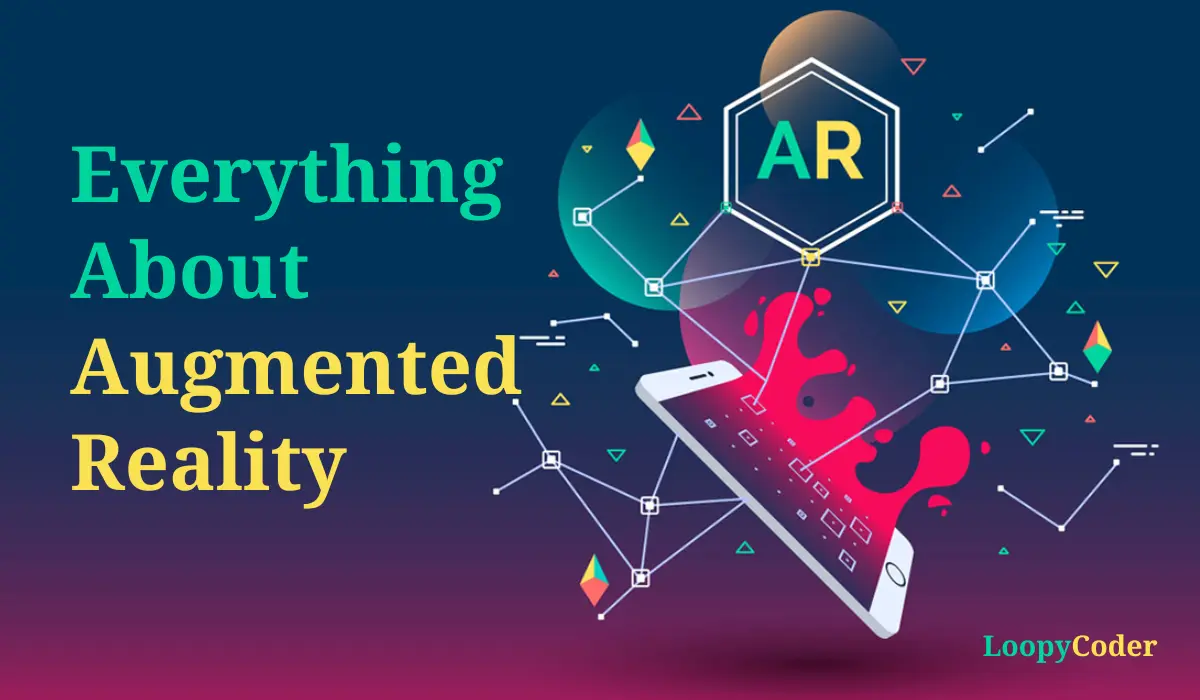Augmented reality (AR) is one of the stunning chapters in today’s digital world, where technology is at its peak. It is an innovative system that connects virtuality to the real world. With AR, you can bring your illusions to life in the real world on the screen of your smartphone or computer. This technology is widely used at present. Games, and even different filters in Instagram or Snapchat, include augmented reality.
In this article, we will learn about augmented reality in depth. Here you will learn about the different elements used to operate this technology and how it works. In the later section, I also compared augmented reality with virtual reality. So, hold your breath and jump into the world of augmented reality, where virtuality meets the real world-
What is Augmented Reality?
Augmented Reality or AR is the real-time blending of digital material with the user’s environment. This term is often used alongside virtual reality or VR. But there is a huge difference between them. Virtual reality produces an entirely artificial environment. In contrast, augmented reality (AR) users encounter a real-world environment with a layout of perceptual information.
The term augmented reality was first coined in 1990 by Thomas Caudell, an employee of Boeing Computer Services Research. He used this term to display how the head-mounted used by electricians functions when assembling intricate electrical harnesses. However, the use of augmented reality in the commercial sector began in 1998 with the yellow first-down marker that started to show in televised football games.
The main advantage of augmented reality (AR) is that it successfully combines digital and three-dimensional (3D) elements with how people perceive the actual world. It is used to provide more information by changing the natural elements in one way or the other. This data is then superimposed on the device to create an integrated experience in which digital data alters the user’s sense of reality.
Augmented reality has a wide range of applications. Through a tool like a smartphone or pair of glasses, augmented reality (AR) provides users with visual components, sound, and other sensory information. This layered information can also enhance a setting or conceal some natural surroundings. And you can use them for amusement to decision-making purposes too.
The most well-known consumer of augmented reality (AR) goods right now are Google Glass, smartphone games, and heads-up displays (HUDs) in automobile windshields. But many other sectors, like healthcare, public safety, gas and oil, travel, and marketing, also use technology.
How Does Augmented Reality Work?
There are many ways to offer augmented reality. This includes smartphones, tablets, and eyeglasses. Additionally, contact lens-delivered AR is also available. The basic elements needed for AR technology are as follows:
- Hardware: The hardware components of AR include: GPS, optical sensors, solid-state compasses, gyroscopes, accelerometers, RFID, and wireless sensors.
- Software: The use of AR software requires a variety of hardware, including tablets, phones, headsets, and more. These integrating devices are equipped with sensors, digital projectors, and the necessary software to allow the projection of these digitally created objects into the physical world.
- Camera: AR is all about interacting with the real world with a virtual effect. And the camera is in charge of capturing images of the surroundings. It could be the camera of your smartphone for operating AR technologies using your phone.
- Internet connection: Internet access is a must for AR. It allows for transmitting data from the physical world to a remote server. And thus it restores virtual data associated with it.
- Screen: AR requires a display to showcase the artificial inclusions to your surroundings. In this case, the screen is the element that functions as a display. Here it can be the screen of your smartphone, tablet, laptop, or computer.
- Trigger: It consists of a physical component that must be identified by the software before the related virtual data is displayed.
- Marker: These are photos that are altered by the hardware in charge of placing the virtual item in a particular location. The application will use this image to decide where the 3D digital content will be displayed in the user’s field of view.
These elements are usually present in mobile devices, with sensors like cameras, accelerometers, GPS, and solid-state compasses. This makes AR more approachable for regular people. For instance, a GPS can be used to determine the user’s position, and its compass can be used to determine the device’s orientation. Besides, advanced augmented reality (AR) programs in the military sector use Machine vision, object recognition, and gesture recognition for instruction.
Apps for augmented reality are created in specialized 3D software that enables programmers to link motion or digital contextual data to an AR marker. When an AR app or browser plugin on a computing device gets digital data from a recognized marker, it runs the marker’s code and layers the appropriate image or images. Besides, data processing can be offloaded to another computer if a device is underpowered, as AR can be computationally intensive.
Characteristics of Augmented Reality
Augmented reality is popular these days and widely used in a number of sectors. The most common characteristic of augmented reality is as follows:
- AR makes it possible to combine the real and virtual realms. It overlays digital components on actual photographs.
- It enables real-time user interaction with the projected items and depends on the situation.
- .The user’s actions directly affect how accurately reality is reproduced and presented.
- The projected images are in 3D to blend as naturally as feasible with the actual environment’s physical volume or scale.
- It is contextual, i.e., it correlates to what we see with our eyes, so the data shown on the device is relevant to the context.
- Augmented reality enables you to layer visual information onto the physical environment using technology and devices like our phones.
- It also allows you to access information instantly.
- This assists you in gaining experiences that provide you with useful knowledge about your surroundings.
Difference Between Augmented Reality and Virtual Reality
Augmented and virtual reality are two of the most talked about topics in the present world of technology. Especially in the gaming sector, these two illusion-creating technologies are on fire. So, here I’ve presented to you the difference between AR and VR:
| Augmented Reality (AR) | Virtual Reality (VR) |
| Augmented reality uses real-world settings. | Virtual reality is completely artificial or virtual. |
| AR is only 25 percent virtual. | VR is 75 percent virtual. |
| AR users can control their presence in the real world. | The system controls the VR users. |
| To use AR technology, no headset device is necessary. You can operate it using a smartphone. | To use virtual reality technology, you need to have a headset device. |
| AR requires higher bandwidth in comparison to VR. | VR can run under lower bandwidth. |
| AR enhances both the virtual and real world. | VR only enhances a fictional reality. |
| It is more accessible as any person with a smartphone can use it. | VR is not accessible to all classes of people, as it requires special equipment such as computers, sensors, headsets, and gloves. |
| To enjoy AR technologies is affordable. | Virtual reality services are quite expensive. |
Now, knowing the differences, you may ask which is better. To be honest, both are good in their individual sectors. But you can get the best result by combining both of them. The idea is to construct a world of fiction that still permits communication with the actual world. And thus, it will bring the most amazing outcome.
The Bottom Line
Augmented reality is a technology that brings artificial visual elements to the real world. This technology requires some basic elements that include a camera, hardware, software, internet connection, marker, etc. It is vastly used in a wide range of industries. In entertainment, education, military, marketing, and many other fields, AR is effectively in use.
This is an affordable way to enjoy virtual effects. Using the camera of your smartphone, you can enjoy this technology. Unlike virtual reality, it doesn’t require additional devices like a headset, gloves, and visual glasses. This makes augmented reality affordable and open to all categories of persons.

